BBC Wales' farewell to Llandaff after 54 years
- Published
How BBC Wales' headquarters has changed over the years
The head of BBC Wales has said it was "critical" to relocate its headquarters across Cardiff, despite the global pandemic.
A new building in the city centre replaces the 1960s Broadcasting House in Llandaff.
Daily TV broadcasts are about to begin from the new base, two months after radio services started there.
BBC Wales director Rhodri Talfan Davies said its previous HQ was now "entirely unfit" for modern broadcasting.
The new base in Central Square is the first in the UK to use IP technology, and is considered to be the most advanced broadcast building in Europe.
IP will bring the latest internet technology into different aspects of production, including allowing different devices dotted around the building to recognise and "talk" to each other.
It is already responsible for transmitting BBC One Wales and BBC Two Wales, while BBC Radio Wales and BBC Radio Cymru began broadcasting from the site in July.
The first TV programme to be broadcast from the site was on Tuesday when coverage of Wales women's football match against Norway was presented from one of the new studios.
This is an investment in broadcasting in Wales for the next 20 or 30 years. We have invested practically nothing in Llandaff for the last 20 years waiting to move
Later in September the daily TV news programmes Wales Today and the Welsh language Newyddion will broadcast from a new studio in the building.
Mr Talfan Davies said: "You would never choose to move a modern broadcaster in the middle of a global pandemic. But it was critical. We could not afford during an emergency period like this to have our broadcasting infrastructure across multiple sites.
"This is modern, fit-for-purpose technology. Llandaff was showing its age. So despite all the limitations of social distancing it was critical that we made the move, and the team has performed miracles to get us to this point."
Social distancing measures mean around 80% of staff will continue working from home, and only those staff members involved in critical broadcast output are allowed to work from the building.
'A modern broadcaster'
The BBC has invested £100m in the new headquarters.
Mr Talfan Davies said the project remained within its budget, and said audiences would see the difference.
"We will deliver this project in its entirety within the budget that we have set, and that is a terrific achievement. This is an investment in broadcasting in Wales for the next 20 or 30 years.
"We have invested practically nothing in Llandaff for the last 20 years waiting to move. What we have here are technology, facilities, studios - everything that you need for a modern broadcaster to be able to do its best creative work for the next 20 or 30 years. More than that, I hope the audience see that benefit immediately on screen."
The new building is part of the redevelopment of Cardiff city centre. The delayed new bus terminal, which replaces the bus stops that were demolished to make way for the new office blocks, is the final piece of a huge jigsaw of buildings that have sprung up in front of Cardiff Central station.
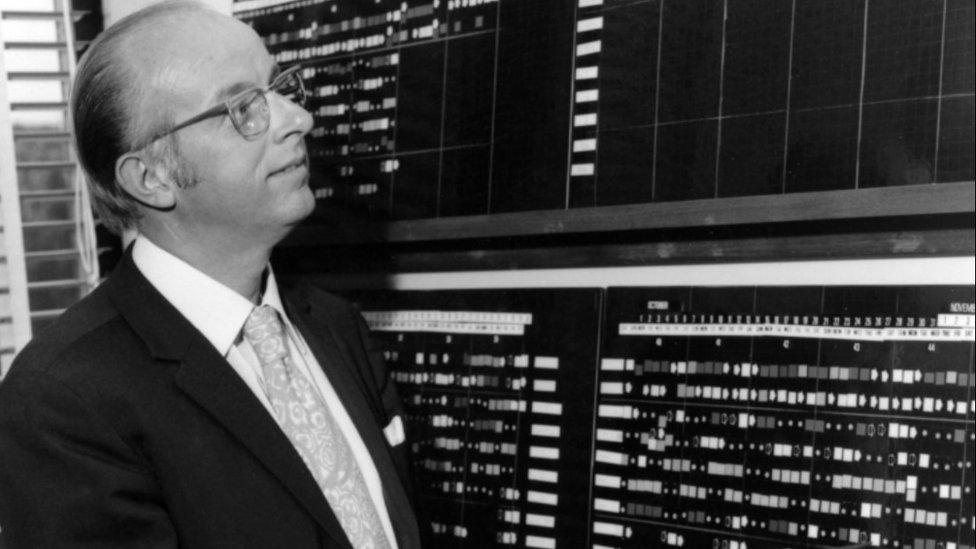
A planning board at BH in the late 1960s
Broadcasting House in Llandaff opened to staff in 1966 before a royal opening by Princess Margaret a year later.
Designed by the Merthyr Tydfil-born architect Dale Owen, the building's modern style is defined by its white concrete and sharp angles.
Mr Owen had previously designed university buildings in Swansea and Cardiff, and was responsible for the visitor hall and offices at St Fagans National Museum of History.
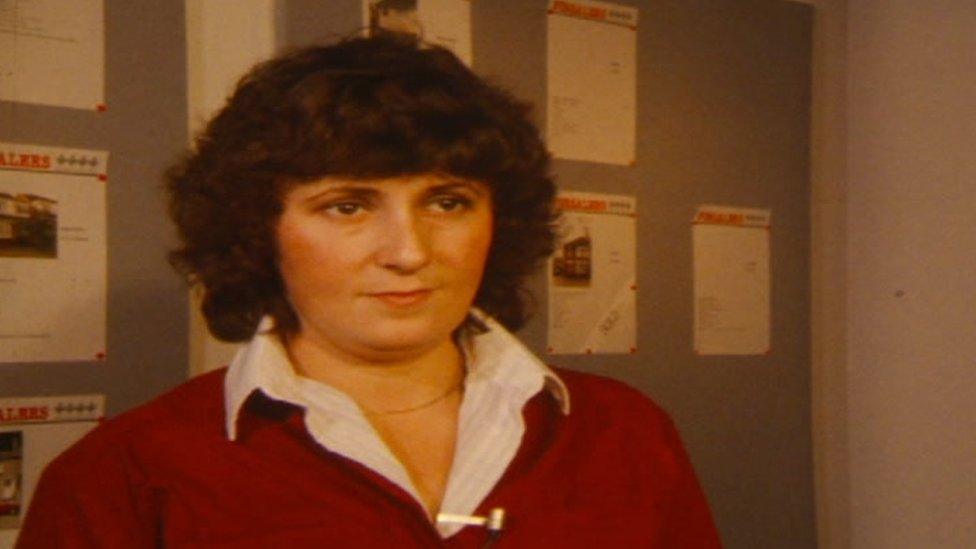
Menna Richards reporting for Heddiw in about 1980
Broadcasting House - or BH as staff came to call it - was a magnet for aspirational broadcasters like Menna Richards.
She joined the BBC as a reporter on the newly-launched Welsh language station Radio Cymru in the late 1970s, and went on to become controller of BBC Wales in the year 2000.
The offices of BH were dominated by men in those days.
"There were so few women in the newsroom. I think when I started there were probably about three of us. But I am very glad to say it has changed a great deal over the years," she said.
"The building was considered to be an important building, architecturally. But of course it was what was happening inside the building that really mattered. I think what it did was to give people that sense of confidence that this was an important building, people recognised it as being the home of the BBC. But ultimately it is the talent and creativity of the people inside the building that really matters."
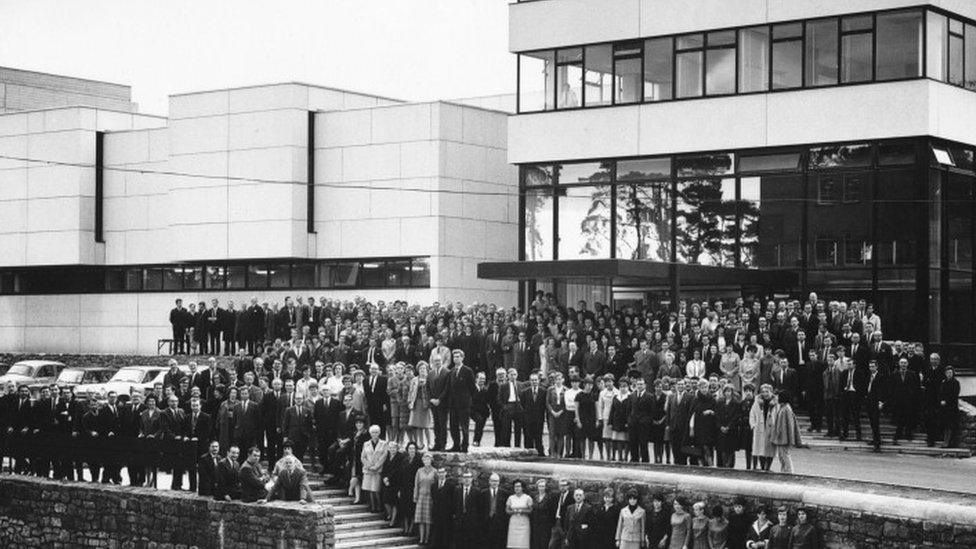
A staff photo on the steps of the new BBC Wales building in 1966
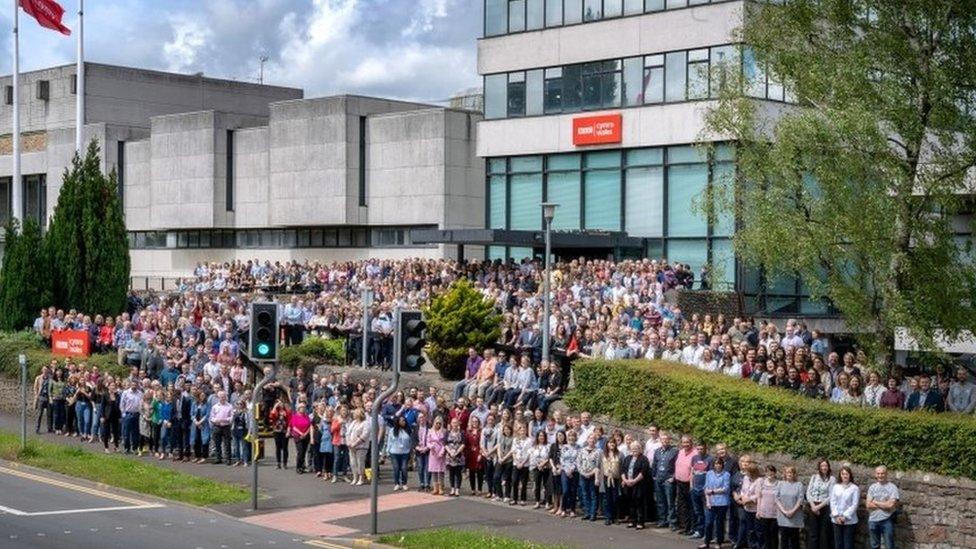
Staff in Llandaff gathered in June 2019 to recreate the photo, ahead of the move to the new building
Menna Richards left to work for HTV where she eventually became its managing director in 1997. Three years later she returned to Broadcasting House as controller of BBC Wales.
"It was a bit of a surprise, actually. I had never thought I would come back to do that job 20 years later. Particularly because when I left to go to work for HTV I was told by a boss that I would never come back again, and that I had somehow betrayed the BBC!"
Ms Richards led a revolution in drama production, and forged a unique bond with the writer Russell T Davies to relaunch Doctor Who.
"What was such a pleasure about that was the talent here both within the BBC and the wider television sector in Wales could make a series that resonated on an international scale. And that was a source of huge pride, I have to say."
It also signified the need for better production facilities for dramas than those which existed at Broadcasting House, and the BBC built its new studios in Roath Lock in Cardiff Bay to house Doctor Who and Casualty, and later its Welsh language soap opera Pobol y Cwm.
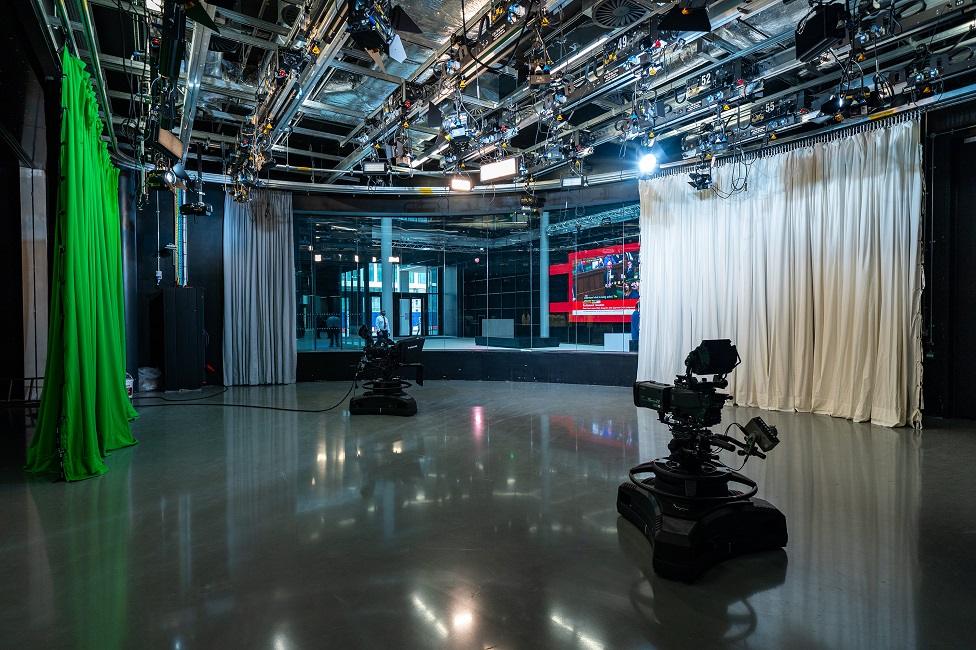
A new studio at Central Square
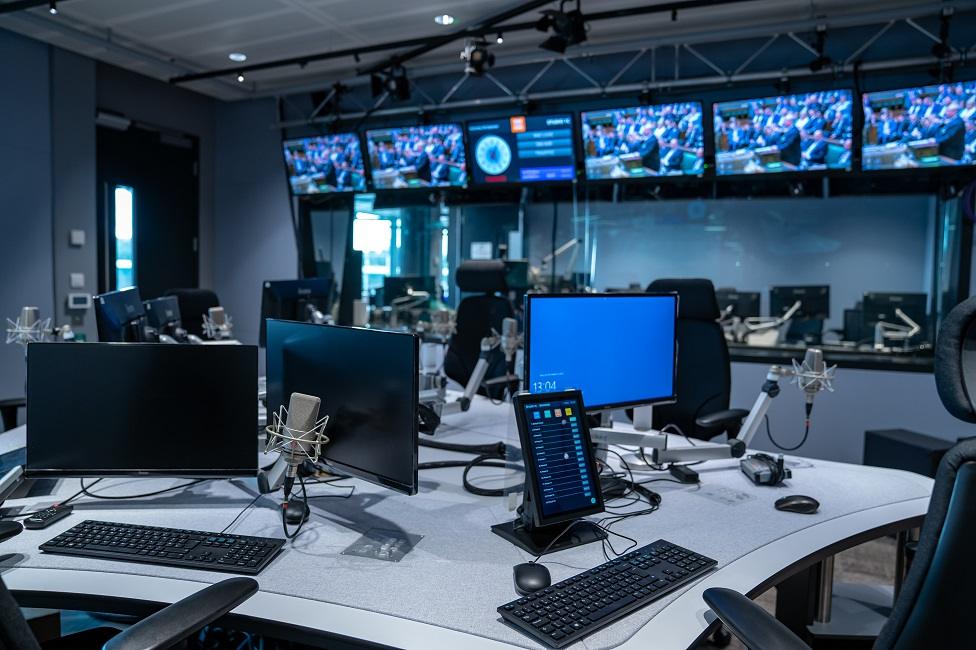
Inside the new BBC Wales building in Central Square
Now that all of BBC Wales' services are relocating to a modern, innovative headquarters, Ms Richards says it is a cause for optimism rather than sadness at the future demolition of Broadcasting House.
"We shouldn't be afraid of change. For me it is a sense of nostalgia rather than sadness, and pride that I was involved in it for so many years.
"I consider it to have been a real privilege to have worked in this building."
The old building, with just security and maintenance staff left on site, is all but empty.
Moving has led to a lot of nostalgia for Rhodri Talfan Davies - but no regrets.
"Yeah I will miss Llandaff, I used to walk past that building every day when I was at school over the road. And back then it conjured the romance of broadcasting, the stars, all that stuff. It has got amazing memories.
"But it is also entirely unfit for what a modern broadcaster needs. That's what we have here at Central Square, and more than that, we get to be much, much closer to our audiences in the heart of an incredibly diverse city."
- Published15 July 2020
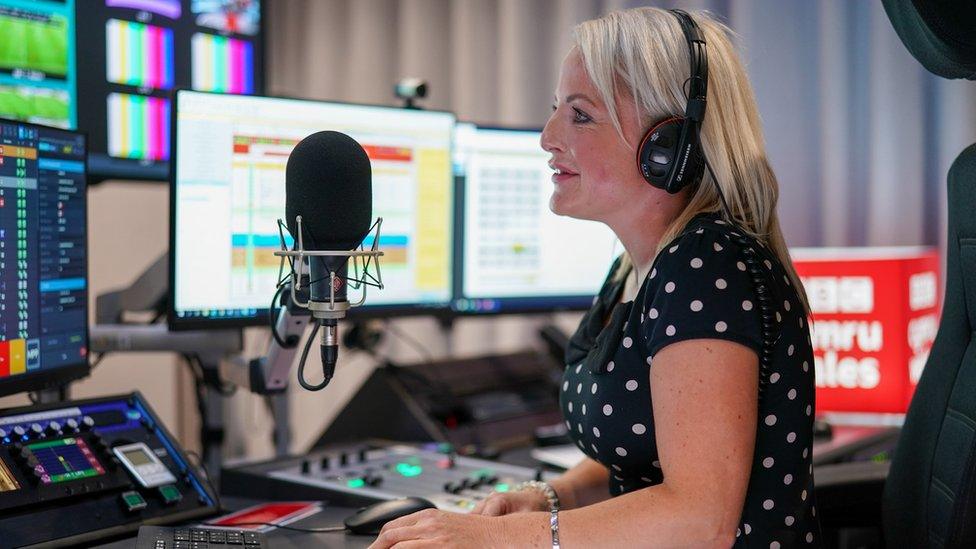
- Published21 August 2013
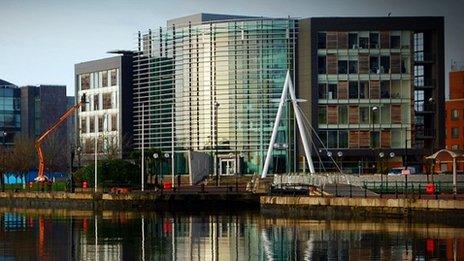
- Published26 October 2018
